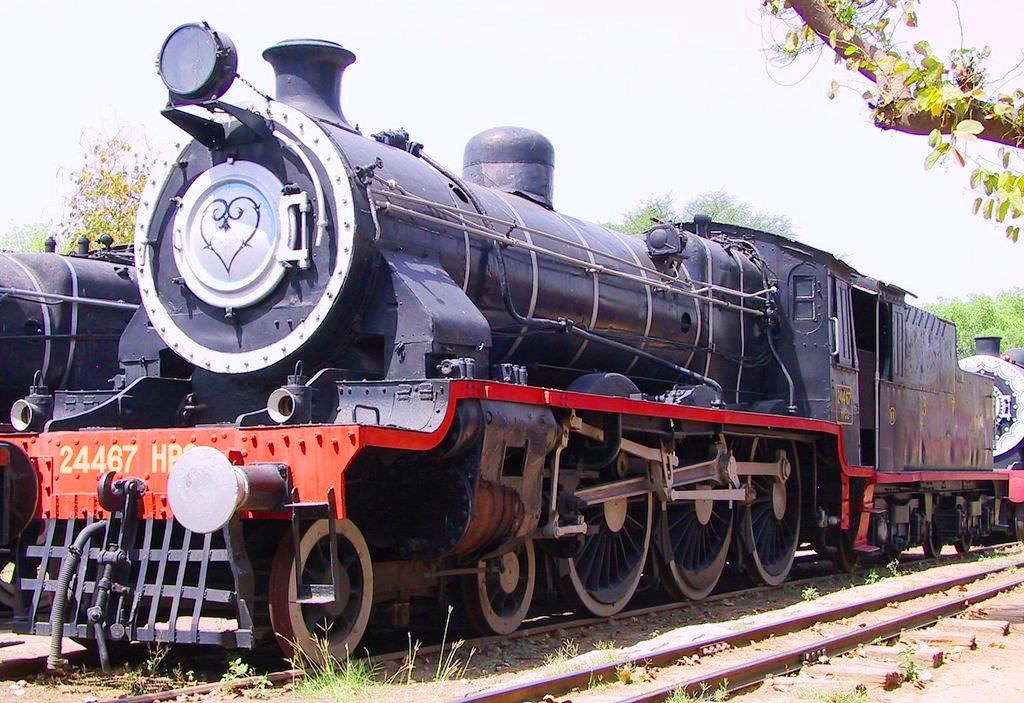
Mountain Railway India
Indian Railways play a critical role in transporting Indian passengers across the country. While the majority of the train network is covered on the plains of Indian soil, there are certain rail networks that climb up the steep mountains of India. These train networks are designed to carry up and bring down passengers and goods with safety and comfort, so speed is not really a major factor here. This post is a part of the series on Indian Railways. In my previous post I talked about how to travel conveniently by train in India followed by top 5 heritage and luxury trains in India, but this time, we go up the hills and mountains and discover how these trains evolved in the first place.
Historically, the mountain train in India was a concept that came into existence during the British Raj (rule) in India. The British (East India Company) was trying to spread its wings across the country and the only places they weren’t able to expand were villages and towns located atop the hills and mountains. In 1844, Sir John Lawrence, the then Viceroy of India, debated that these mountain towns and village can be converted and used as military stations where soldiers can relax after they return from battles and months of service to The Company. To make things convenient they started working on the different projects simultaneously that would allow them to carry goods and passengers up the mountain conveniently and that’s how the mountain railways of India came into existence. Certain towns like Shimla, Darjeeling, Kanga Valley, Ooty, and Matheran were chosen after a lot of debate and thought-process and each town served British in a certain way.
The Darjeeling Himalayan Railway
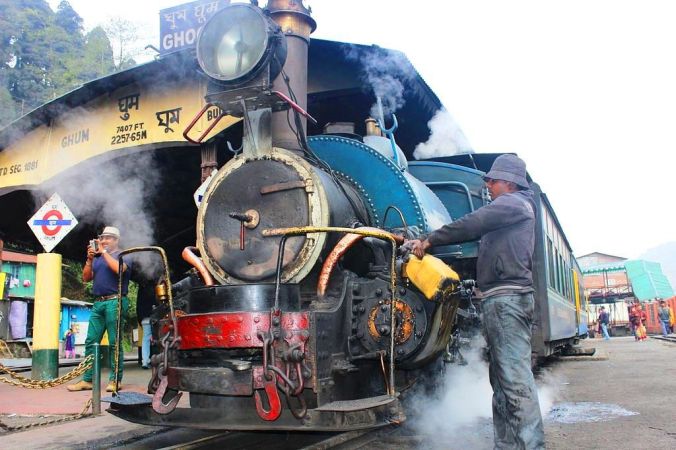
Darjeeling Himalayan Railway Train
Popularly known as the ‘Toy Train’, the Darjeeling Himalayan Railway runs between Jalpaiguri and Darjeeling in the Indian state of West Bengal. The odd thing is that West Bengal lies on the east coast of India. The railway was built here in 1879 and 1881 and the route spans 78 kilometers (48 miles) long.
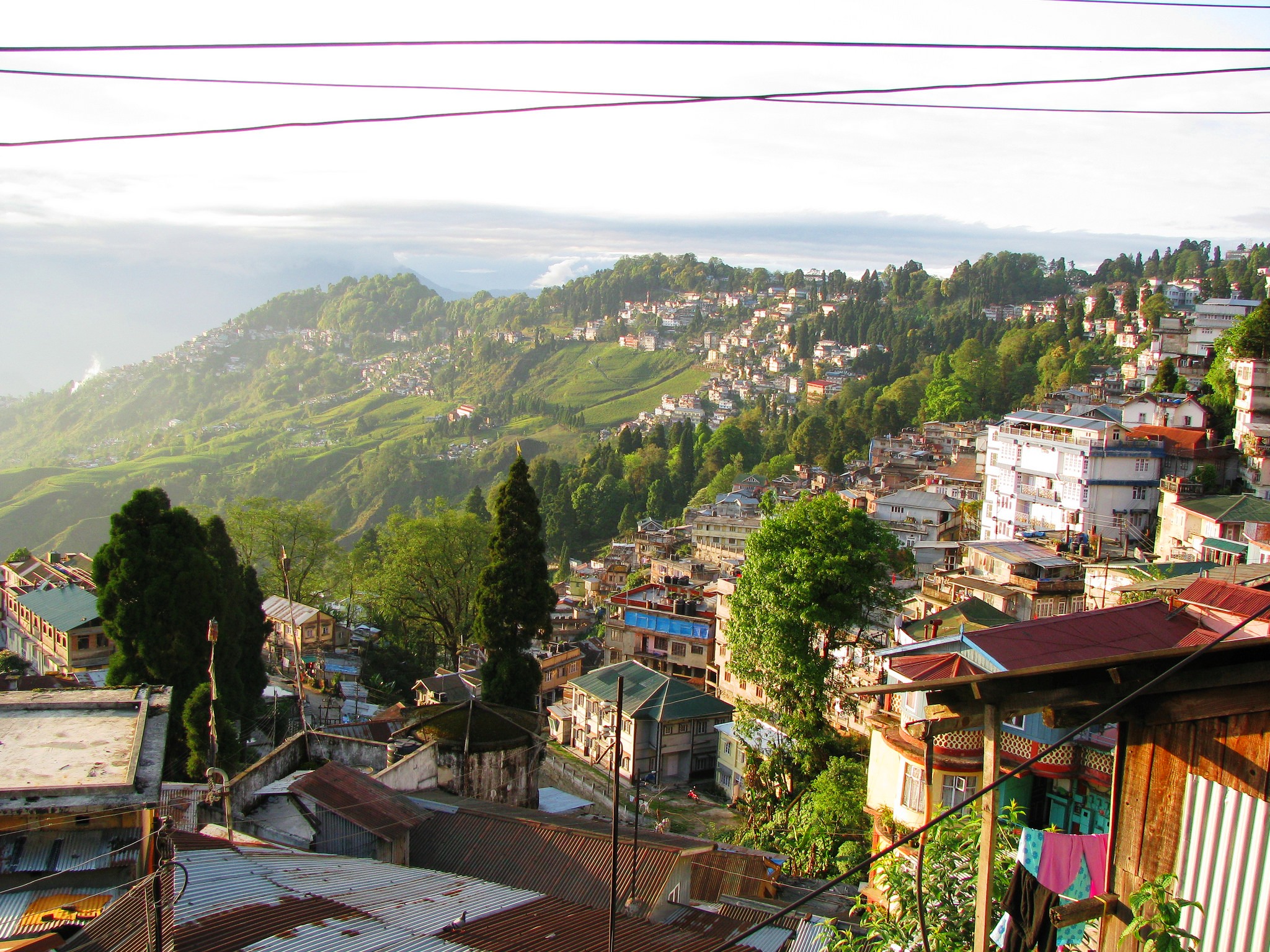
Darjeeling Town
Jalpaiguri is just 100 meters (328 ft) above the sea level, but by the time the train reaches Darjeeling the train is 2,200 meters (7,218 ft) above the sea level. One of the reasons the British chose Darjeeling is because there were many Indians here willing to join the British troops. Secondly and more importantly, Darjeeling is world famous for its tea plantations. In 1905, the town had 79 tea gardens estates covering 40,000 acres of land and employed 42,000 workers and producing 8 million kilograms of tea annually which the East India Company then exported globally earning a hefty profit.
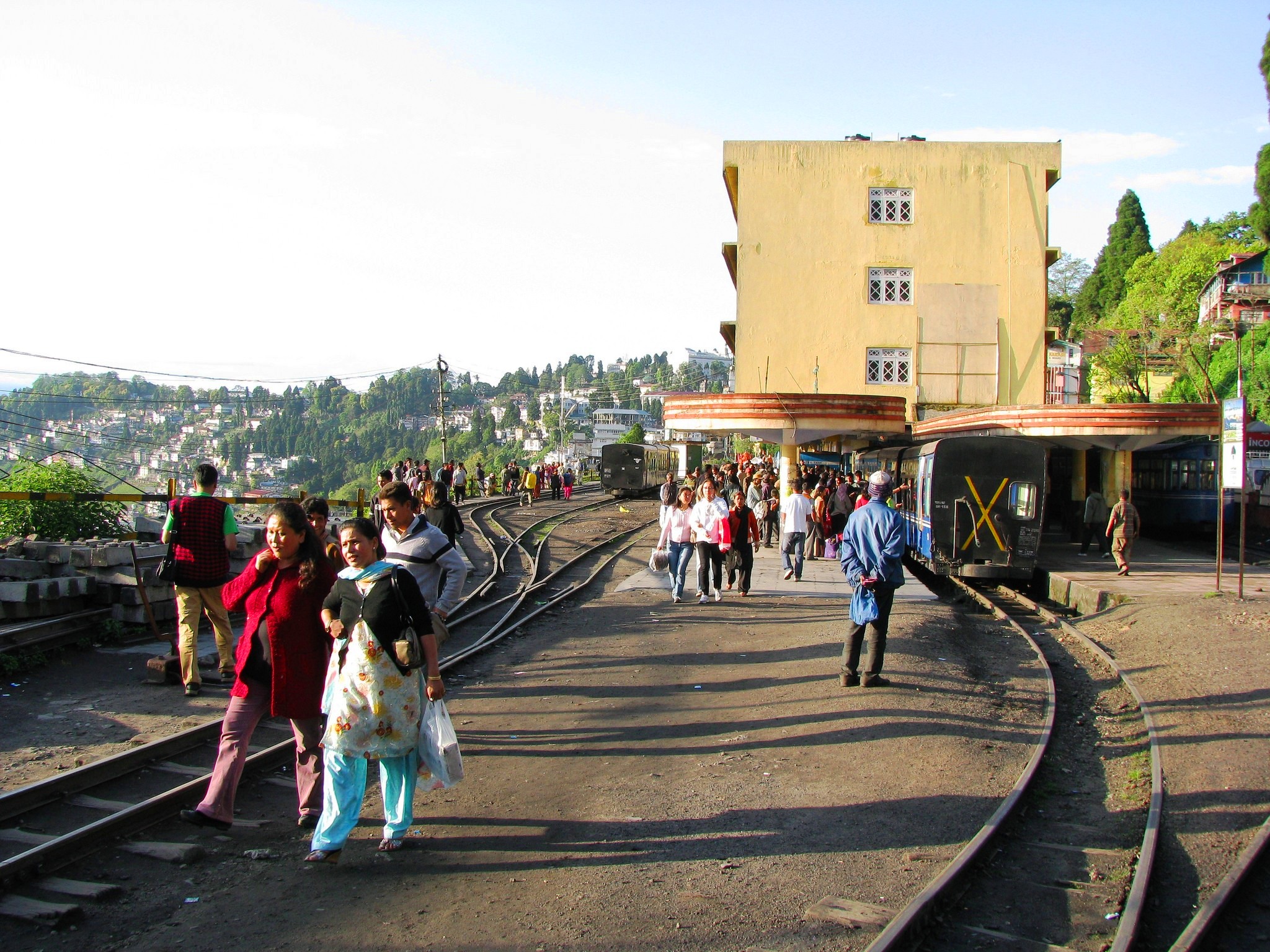
Darjeeling Railway Station
The train follows the Hill Cart Road and the train track is laid on the side of the road as you can see in the image below. This means the train actually passes through the roads and markets of these tiny villages and train has to continuously honk to ensure the regular traffic stays out of its way.
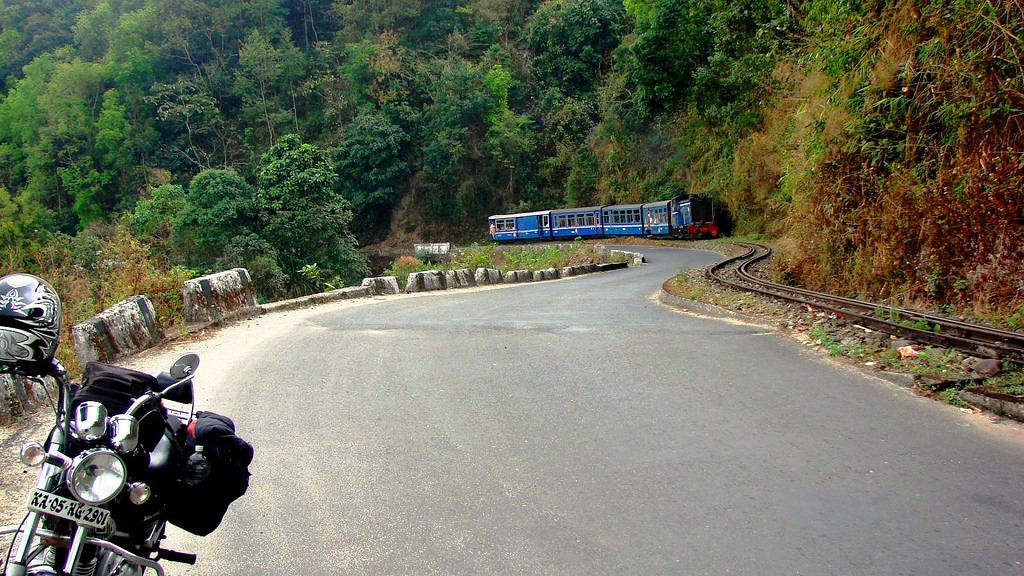
DHR Train and The Road
The DHR currently uses B-Class steam locomotives designed and built by Sharp, Stewart and Company made in 1889 and the North British Locomotive Company made in 1929. Initially, 34 of such engines were built, but now only 12 are in use.
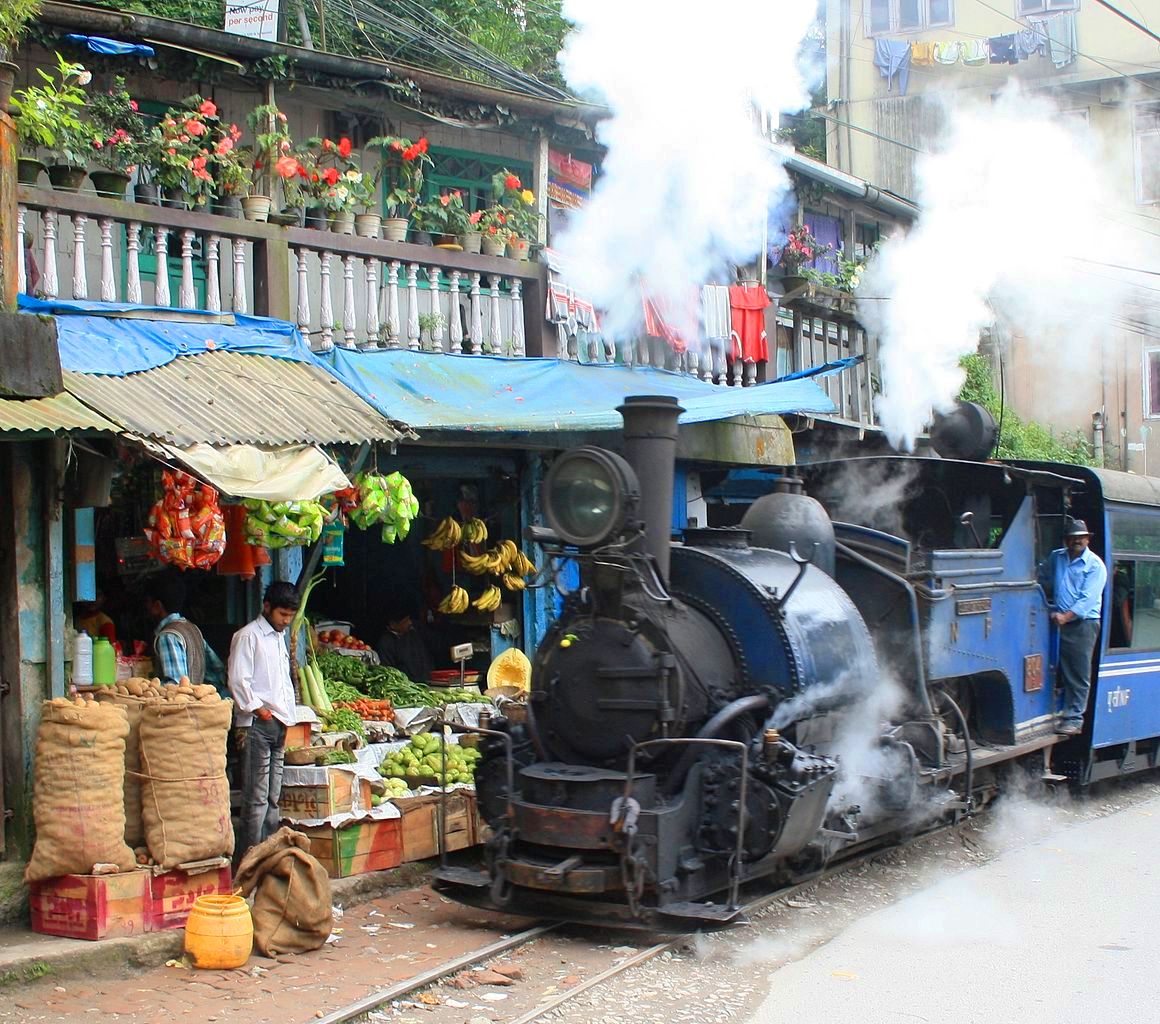
Darjeeling Railway Train Passing Through the Market
While there have been many changes made to the way the Darjeeling Himalayan Railway functions there is very little change in terms of experience. This mini train continues to excite travelers and rail enthusiasts the same way as it did a century ago.
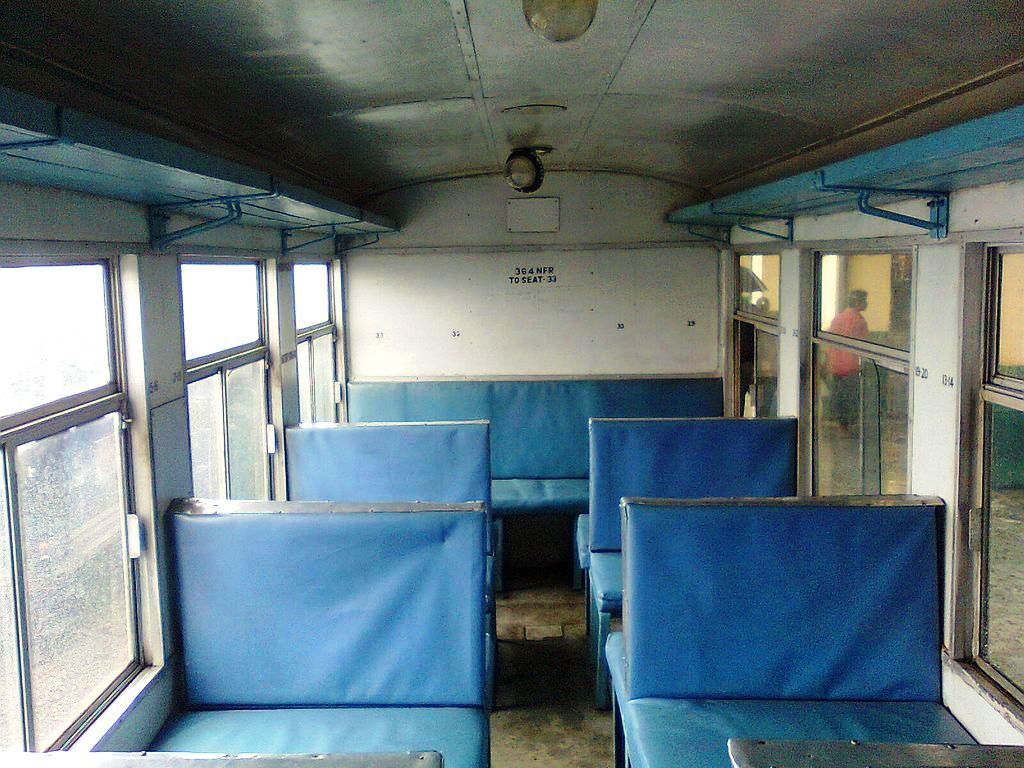
Simple Interiors of the Second Class Cabin of the DHR
The Darjeeling Himalayan Railway Society has been established that looks after the preservation and act as a support group to ensure this train is never lost in time. A classic Hindi movie song Mere Sapno Ki Rani in late 1960s showcased the Darjeeling Himalayan Railway in all its glory and made it popular nationwide. Watch the hour-long informative BBC documentary here that covers the railways, the people of Darjeeling, the people who run the DHR and how they do it day in and out.
The Nilgiri Mountain Railway
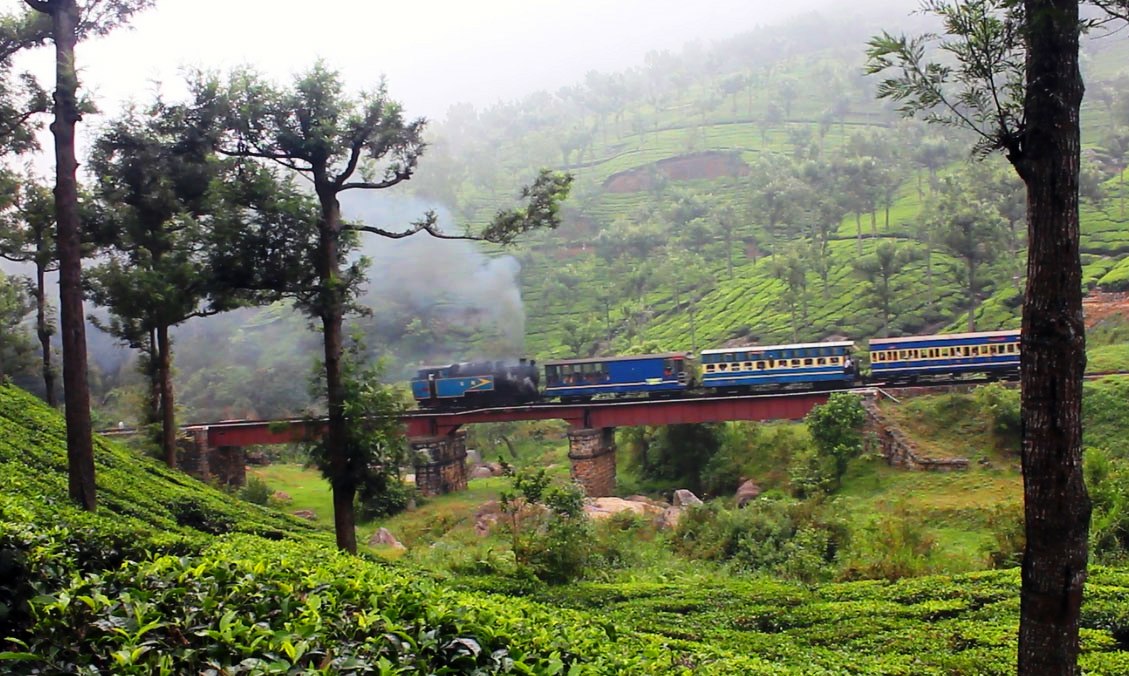
NMR Train
While the Darjeeling Himalayan Railway is located on the North-East corridor, the Nilgiri Mountain Railway is located down south of India. This railway was built by the British in 1908 and was initially operated by the Madras Railway. However, after the Independence, it was taken over by the Indian Railways.
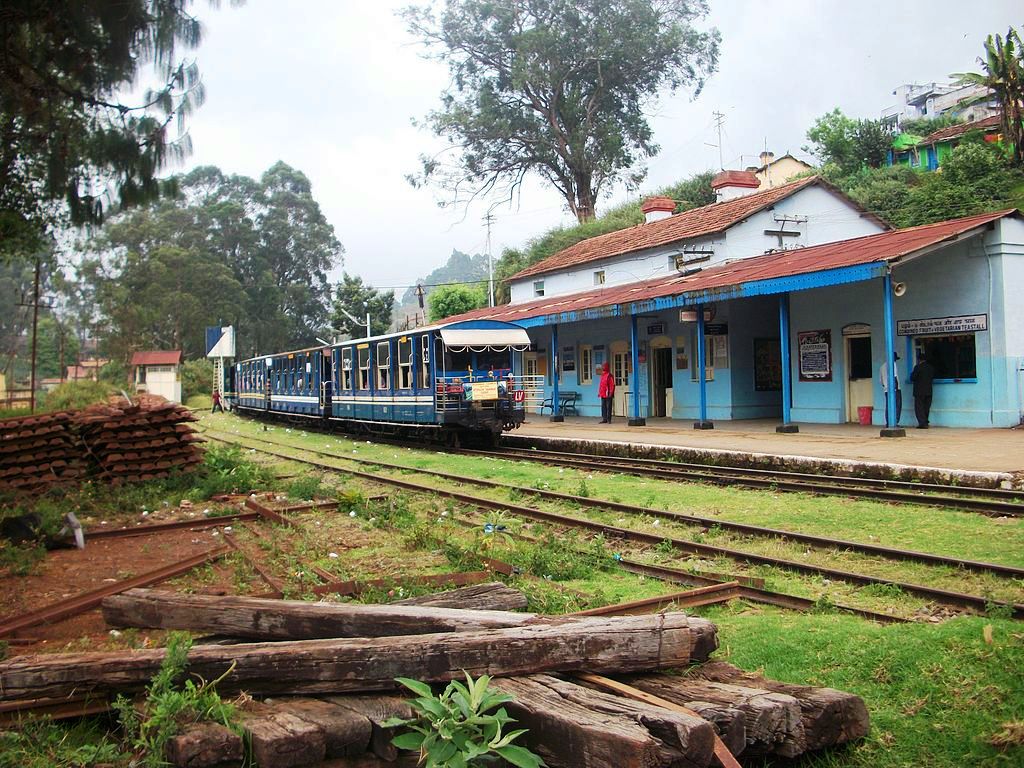
NMR Train at Station
The Nilgiri Mountain Railway (NMR) is a single track railway system that runs 46 kilometers (29 miles). The entire railway track has 208 curves, 250 bridges and 16 tunnels and the entire journey takes approximately 290 minutes (almost 5 hours).
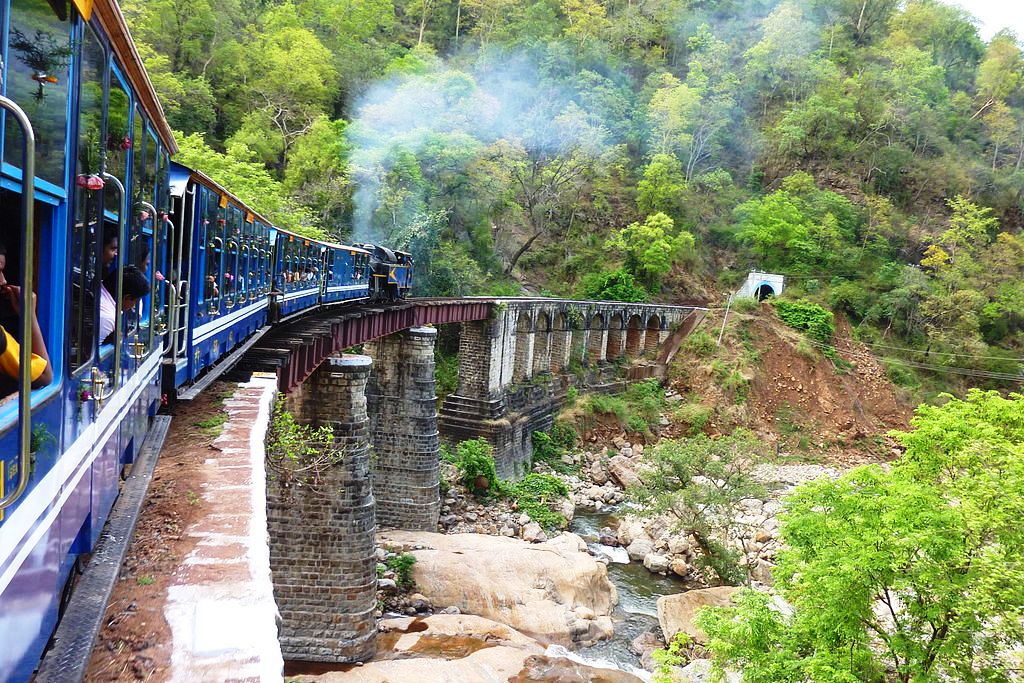
Nilgiri Mountain Railways Train on the Bridge
Back in those days, the British found that the climate in the Nilgiri Mountains (a.k.a. The Blue Mountains) was pleasant and Ootacamund, popularly known as Ooty became a popular summer and weekend getaway. While the British initially had winding roads to transport people and goods, they later reached a conclusion that they need better means to transport and so the Nilgiri Mountain Railway came into existence.
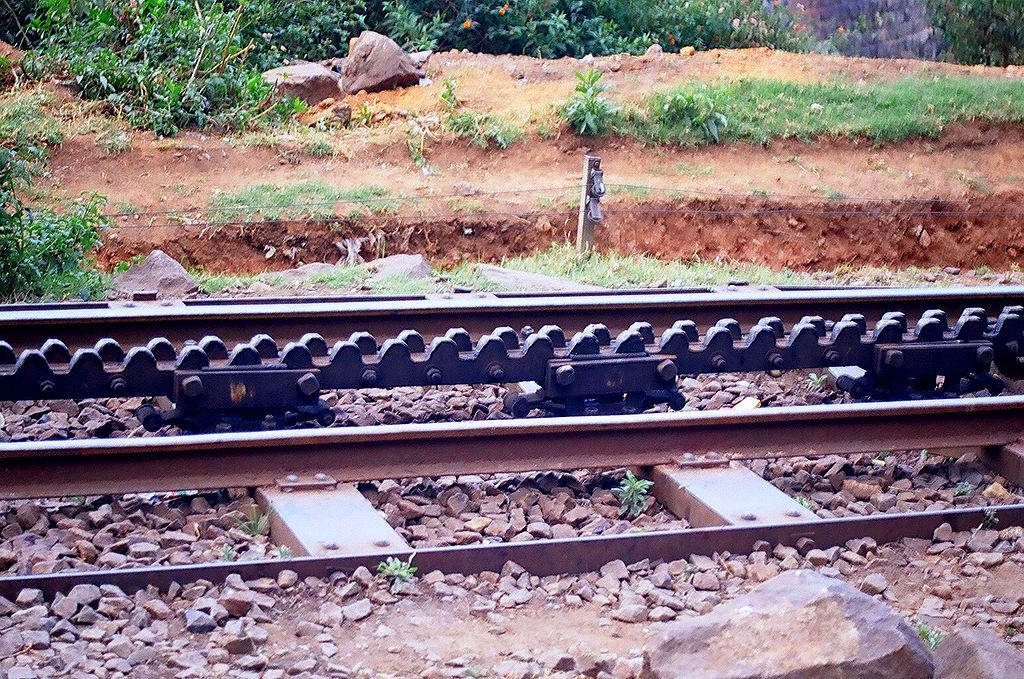
NMR Rack
One of the specialties of NMR is that it is the only ‘Rack and Pinion‘ rail system in India. In July 2005, NMR was added by UNESCO to the World Heritage Site. In the past few years, steam locomotives were replaced with diesel locomotives, but with high demand from tourists and rail enthusiasts, railway authorities have replaced it with steam locomotives once again to haul the train. The new steam locomotives are being made in India by Golden Rock Workshop of Southern Railway and the cost of each locomotive is Rs. 100 million (US$ 15 million).
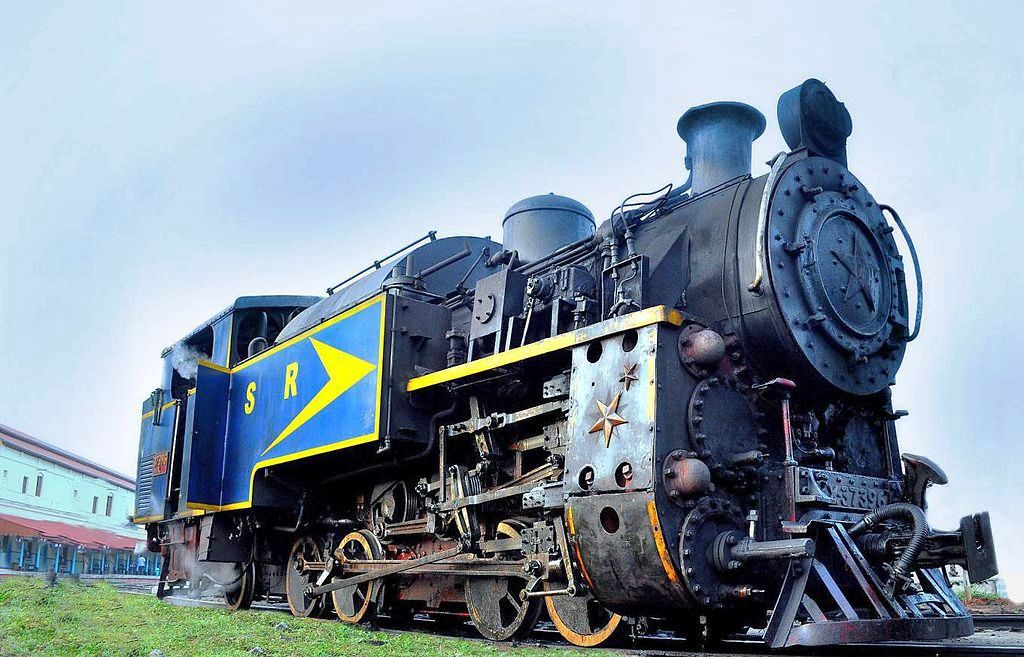
Nilgiri Railway’s X-Class Steam Engine
On the other hand, some of the X-Class locomotives are almost six to eight decades old and were manufactured by the Swiss Locomotive and Machine Works of Winterthur, Switzerland. The Nilgiri Mountain Railway takes almost 4 hours for the downhill journey and has the steepest track in Asia. The immensely popular Hindi movie song Chaiya Chaiya amplified the popularity of the Nilgiri Mountain Railway and made it a national attraction. Watch the Nilgiri Mountain Railway hour-long BBC documentary that covers the raw landscape, the railway system, meet the actual people who run the NMR, the animals around and the lives of the local people.
Kalka-Shimla Railway
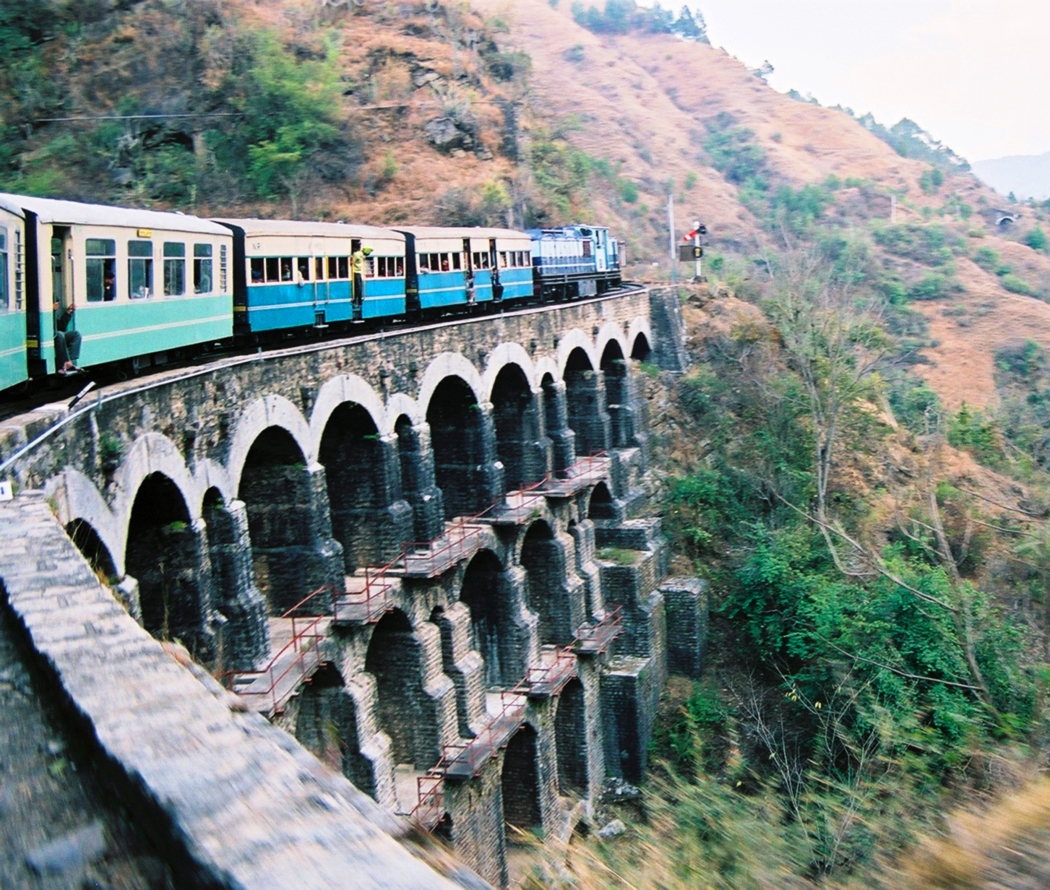
Kalka Shimla Railway Train on the Bridge
Right up in the north India is the Kalka-Shimla Railway that allows the passengers to move up the treacherous terrain from Kalka to Shimla. This railway route of 96.5 kilometers (59.9 miles) was built in 1898 and at the time of the construction, it had 107 tunnels and 864 bridges. The reason why British made this railway is because Shimla by 1864 became the summer capital of the British. Most of the British troops were deployed at the base of the hills and so during the summer days, the soldiers would move up the hills (using a bullock cart) to enjoy the pleasant climate and cool winds blowing from the Himalayas. For this, the East India Company decided to build a railway that can transport people and goods efficiently. Chief Engineer H.S.Herlington was assigned the project and it took around seven years to complete the project.
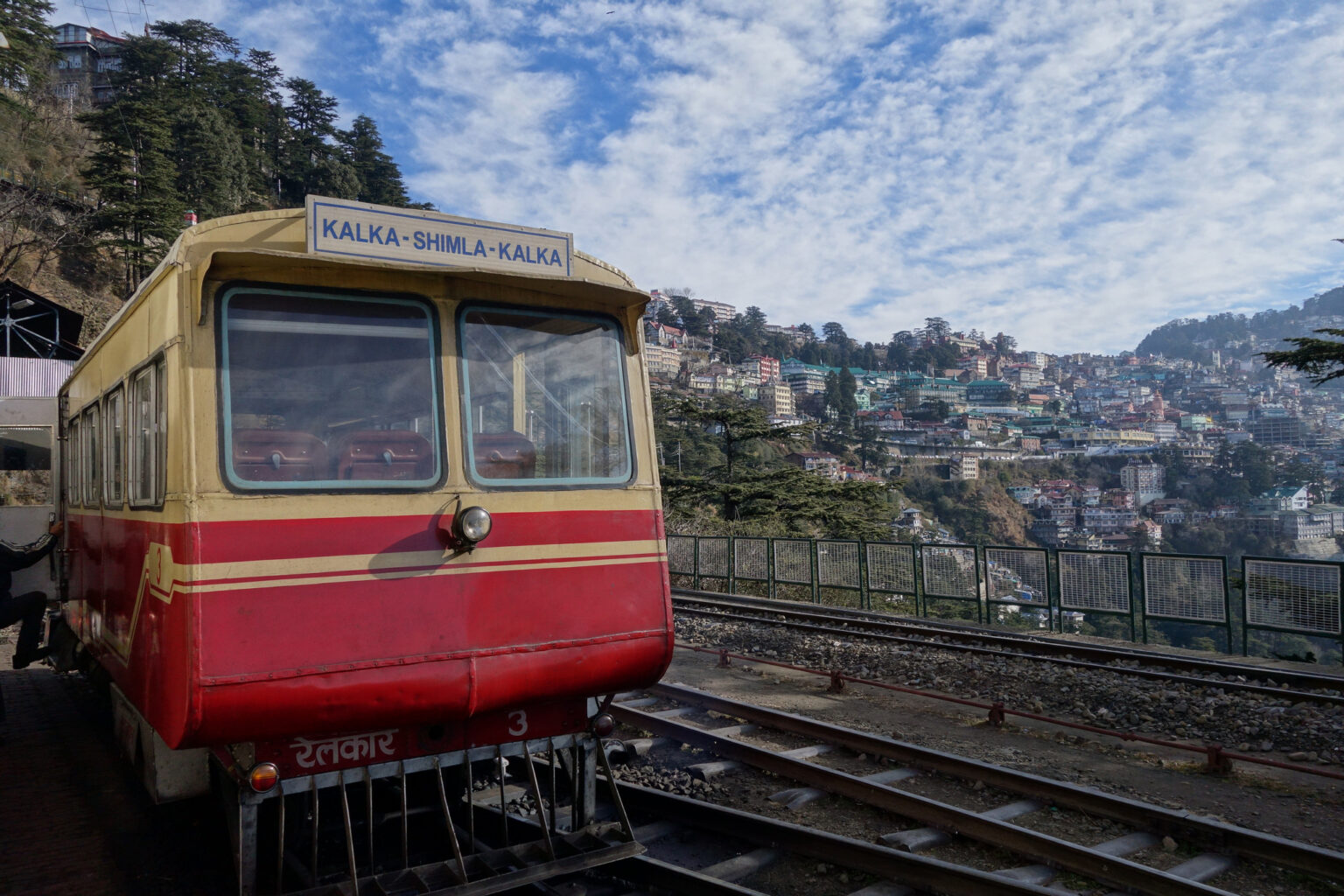
Kalka Shimla Train at the Station
Initially, the line was owned by the Delhi-Ambala-Kalka Railway Company, but due to high maintenance costs and long construction period the costs doubled. The railway was inaugurated in 1903 by the then Viceroy of India Lord Curzon, and it was mentioned that the railway authorities can charge higher ticket price to cover up the maintenance and repair cost, which they did, but the company was still unable to make any profit. Eventually, the government intervened and bought the railway line and somehow managed to handle the expenses, although they couldn’t make a high profit from it.
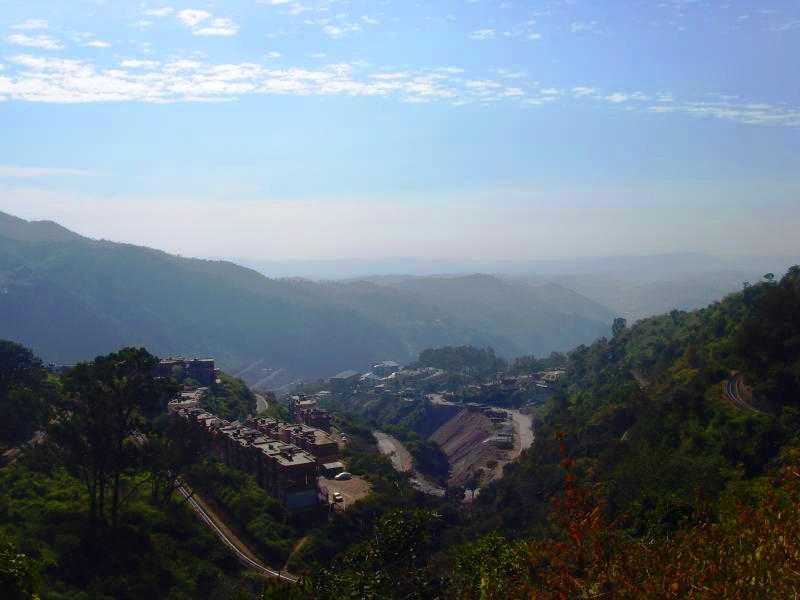
View from Kalka Shimla Railway Train
During the construction of one of the tunnels, Chief Engineer Colonel Barog decided to dig the tunnel from both ends simultaneously but failed to align them. When the news spread, he couldn’t stand the embarrassment and shame and committed suicide inside the incomplete tunnel. Herlington later took over the charge and finished up the job. This tunnel is the longest tunnel of all the 107 tunnels and is called the Barog Tunnel.
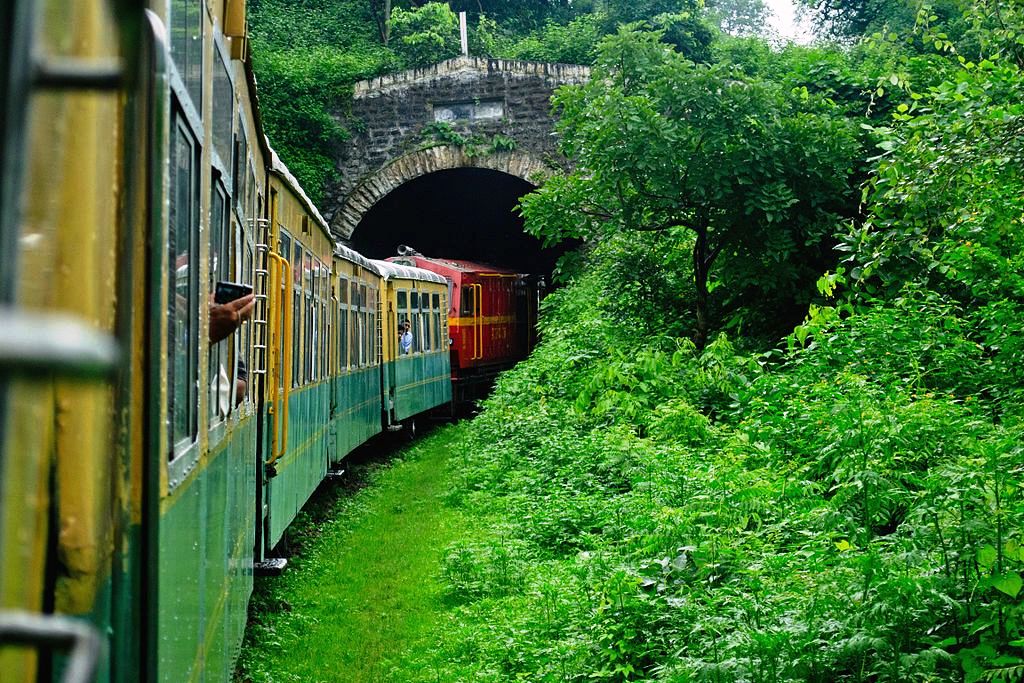
Kalka Shimla Train
All the locomotives used on the Kalka-Shimla Railway were designed and built by Sharp, Stewart and Company. However, the steam locomotive operation ended in 1971 and now ZDM 3 diesel-hydraulic locomotives made in Mumbai are being used. Kalka Shimla Railway is one of the most popular mountain railway networks because Shimla is immensely popular with tourists visiting throughout the year, plus the route is famous for its scenery and brilliant construction work. If you’re interested in Kalka-Shimla mountain railway, I found this very informative and nicely shot hour-long BBC documentary that explains how the system functions on a daily basis, the people who run the KSR, their daily lives, see the first day of snow in Shimla and how tourists are excited about it.
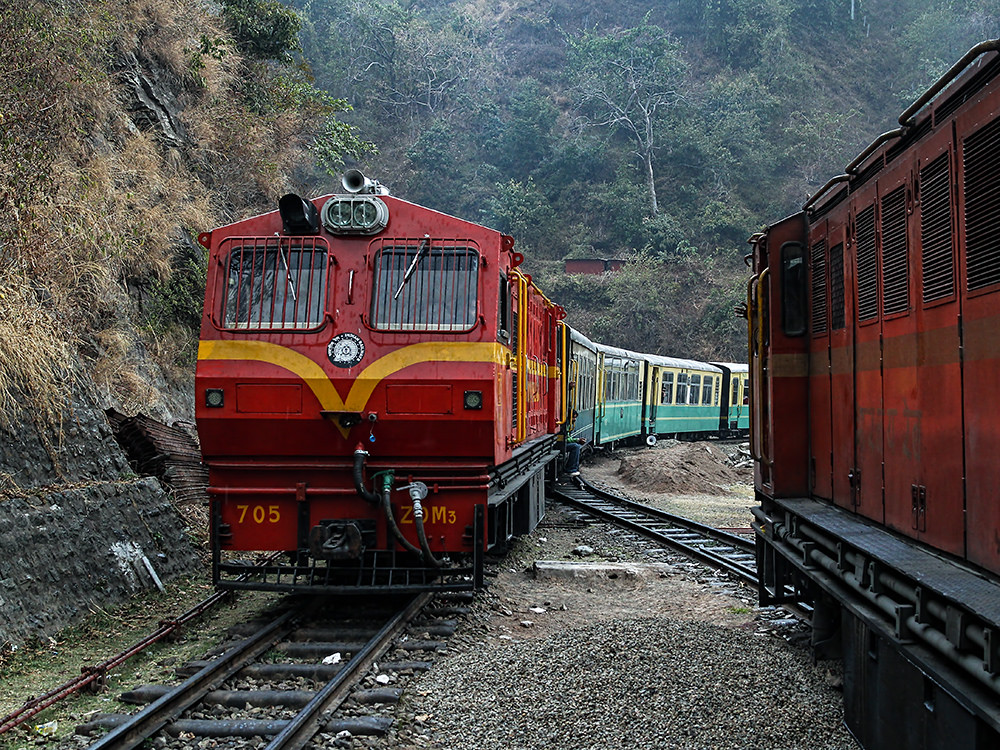
Kalka Shimla Railway ZDM 3 Diesel Hydraulic Locomotive
Apart from these three iconic mountain railways, there is the Matheran Hill Railway documentary, Kangra Valley Railway documentary and the upcoming Northeast Frontier Railway and Kashmir Railway that also fit in the same category. On a basic level, these railways connect cities to small villages and towns up the hill, but these railways are outstanding examples of engineering marvels because they were built without high-end technology and symbolize the rich heritage of India during the British Raj.
15 comments
I am so glad you are continuing the train posts Sharukh. These are wonderful trains. The Nilgiri Mountain Railway seems like a great way to spend five hours, especially since I love bridges and tunnels and I love it when trains turn and I get to see the rest of the train from my window. I’m not too surprised to see steam in use, they are very powerful locomotives.
I wouldn’t mind to travel even if it takes more than 5 hours. I and Sarah love to see the rest of the train when it turns and snakes through the mountain terrain. I’m usually more focused on taking pictures. I’m not very knowledgeable about the technical aspects, but I hear that steam locomotives are way too powerful than diesel and electric locomotives. I wonder why.
It’s all in how you measure horsepower and “tractive energy”. The later is needed to get the train moving from rest. Steam snd diesel-electric locos differ in the regard. It’s been said that “A steam locomotive of the right size will run the wheels off a train it can’t possibly get started. A diesel-electric set can start a train it can’t run.” They each havd their A steam locomotive of the right size will run the wheels off a train it can’t possibly get started. A diesel-electric set can start a train it can’t run. They each have benefits but getting a steam engine ready to run is a lot of work.
I really appreciate you explaining me the dynamics of steam and diesel loco, but I still didn’t get it. Not your fault, physics and mathematics never get into my head. That should explain you why I chose Arts in college 🙂
Sharukh, I would love to ride any one of the trains, but the Nilgiri is the most intriguing. Five hours to travel 29 miles? Or is that round trip? No matter, I would so enjoy the scenery, the curves and tunnels during that time. Thanks for this piece of Indian railway. I found it truly fascinating and it was cool to see a photo of Darjeeling. Pretty city!
I believe most people are liking the Nilgiris part. Yeah, five hours for one-way trip because of the steep slope. In case, you wanna see the train quickly. Type Chaiya Chaiya in YouTube. There’s a song shot entirely on the train. Insanely hit song.
That’s brilliant research and time invested is commendable. I enjoyed reading and learned a lot about our rich railway heritage.
Thank you Vishal for taking out the time to read the content. I’m always passionate about trains and I want to bring out fresh and less known facts to the readers. While writing the Train Series, I came across so many facts that surprised me, of course, I can’t put so much data, but I have tried my best to compile all of it in an interesting way. I just want to make sure readers don’t get bored of my content.
Thunderstorm hit and I had to run before commenting. I loved the Darjeeling Railway Train’s colors, a vibrant blue not seen much in objects. Pictures are wonderful, Sharukh; are these yours?
Pictures are not mine. However, they are license-free, so I hand-pick them to blend with my content. I prefer to let me readers experience a mental journey.
Sharukh, incredible description of your country’s train system. Yep, along with the photos, I experienced a mental journey. No favorites on the trains, I liked them all! Each has it’s own special task. India is an intriguing land brought to us through your posts. Thank you! 💛 Elizabeth
I’m glad you liked the post. Trains are the lifeline of India. Millions travel daily in Indian trains including me. This post is my way of saluting all those who work hard behind-the-scenes to make our journeys memorable. I think they deserve a global recognition, no matter what class they belong.
Agree wholeheartedly! The behind-the-scenes workers must have a special passion for their jobs. Look at the beautiful scenery they work in everyday! E.
I have been to Darjeeling toytrain and nilgiri mountain toytrain.The two experiences are beautifully diversed and splendidly awesome.
Indeed they are very different.